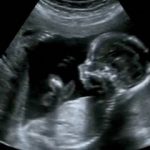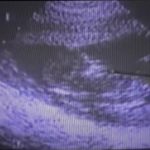This article was shared with me on Facebook by a poster who had researched more into the topic of fetal pain. It is one thing to experience something for oneself and declare it to be true in spite of the naysayers. It is another thing to begin to realize that there are others out there who are beginning to discover these truths scientifically. The First Ache is not totally one-sided, but it is (somewhat) reassuring to begin receiving scientific validation for what we experience. In the hopes of encouraging you to read the article for yourself, here are some of my favorite quotes:
“Merker included his observations of these children in an article, published last year in the journal Behavioral and Brain Sciences, proposing that the brain stem is capable of supporting a preliminary kind of awareness on its own. ‘The tacit consensus concerning the cerebral cortex as the “organ of consciousness,”’ Merker wrote, may ‘have been reached prematurely, and may in fact be seriously in error.’”
“The possibility of consciousness without a cortex may also influence our opinion of what a fetus can feel. Like the subplate zone, the brain stem is active in the fetus far earlier than the cerebral cortex is, and if it can support consciousness, it can support the experience of pain. … Anand praises Merker’s work as a “missing link” that could complete the case for fetal pain.” [Read Book Review_A Child Is Born.]
Preterm infants in NICU returning from operations “came back in terrible shape: their skin was gray, their breathing shallow, their pulses weak. Anand spent hours stabilizing their vital signs, increasing their oxygen supply and administering insulin to balance their blood sugar. . .. ‘That’s when I discovered that the babies were not getting anesthesia,’ he recalled recently. Infants undergoing major surgery were receiving only a paralytic to keep them still. . .. Doctors were convinced that newborns’ nervous systems were too immature to sense pain, and that the dangers of anesthesia exceeded any potential benefits.”
“In a series of clinical trials, he demonstrated that operations performed under minimal or no anesthesia produced a “massive stress response” in newborn babies, releasing a flood of fight-or-flight hormones like adrenaline and cortisol. Potent anesthesia, he found, could significantly reduce this reaction. Babies who were put under during an operation had lower stress-hormone levels, more stable breathing and blood-sugar readings and fewer postoperative complications. Anesthesia even made them more likely to survive. Anand showed that when pain relief was provided during and after heart operations on newborns, the mortality rate dropped from around 25 percent to less than 10 percent. These were extraordinary results, and they helped change the way medicine is practiced. Today, adequate pain relief for even the youngest infants is the standard of care. . .”
“Recent research. . .. It shows that pain may leave a lasting, even lifelong, imprint on the developing nervous system. . .. Infants, and perhaps fetuses, may do something different with pain: some research suggests they take it into their bodies, making it part of their fast-branching neural networks, part of their flesh and blood.”
“In a study of 87 baby boys, Taddio found that those who had been circumcised soon after birth reacted more strongly and cried for longer than uncircumcised boys when they received a vaccination shot four to six months later. Among the circumcised boys, those who had received an analgesic cream at the time of the surgery cried less while getting the immunization than those circumcised without pain relief.”
“Early encounters with pain may alter the threshold at which pain is felt later on, making a child hypersensitive to pain — or, alternatively, dangerously indifferent to it. Lasting effects might also include emotional and behavioral problems like anxiety and depression, even learning disabilities (though these findings are far more tentative).”
“But research. . .showed that fetuses as young as 18 weeks react to an invasive procedure with a spike in stress hormones and a shunting of blood flow toward the brain — a strategy, also seen in infants and adults, to protect a vital organ from threat. . .. He selected 45 fetuses that required a potentially painful blood transfusion, giving one-third of them an injection of the potent painkiller fentanyl. As with Anand’s experiments, the results were striking: in fetuses that received the analgesic, the production of stress hormones was halved, and the pattern of blood flow remained normal.” [Read Article Review_We Treat Babies Before They’re Born.]
“When the surgeon lowered his scalpel to the 25-week-old fetus, Paschall saw the tiny figure recoil in what looked to him like pain. . .. ‘I don’t care how primitive the reaction is, it’s still a human reaction,’ Paschall says. ‘And I don’t believe it’s right. I don’t want them to feel pain.’” [Read Article Review_Answering the Pain Deniers.]
“The fetus’s undeveloped state, in other words, may not preclude it from feeling pain. In fact, its immature physiology may well make it more sensitive to pain, not less: the body’s mechanisms for inhibiting pain and making it more bearable do not become active until after birth.” [Read My Baby is in Heaven.]
“The capacity to feel pain has often been put forth as proof of a common humanity. Think of Shylock’s monologue in ‘The Merchant of Venice’: Are not Jews ‘hurt with the same weapons’ as Christians, he demands. ‘If you prick us, do we not bleed?’ Likewise, a presumed insensitivity to pain has been used to exclude some from humanity’s privileges and protections.”
It is also interesting to note that a reader’s comment to this article shared a personhood experience the mother, W. S., had with her child: “As a mother, I was disappointed to read that “the starts and kicks felt by a pregnant woman” are mere reflexes, according to David Mellor. Doesn’t he realize that babies in the womb sometimes play with their mothers? Mother pokes baby, baby kicks back. Mother pokes twice, baby kicks twice….” [Read more Personhood Stories.]

